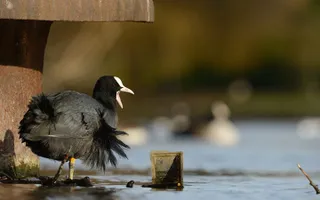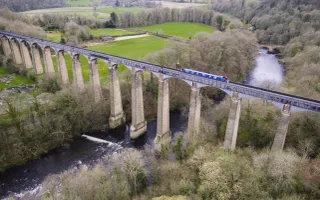Millions of pieces of plastic rubbish end up in and around our canals every year.
Plastic litter can be dangerous for both people and wildlife, so we urgently need to keep up the fight against plastic to keep canals alive.
Precious habitats along our canals and rivers are home to many species of wonderful wildlife that are at risk of permanent harm from litter pollution.
Seven problems caused by plastic rubbish in our canals and rivers
Plastic rubbish:
- Poses potential hazards for younger children and pets
- Damages vital waterside habitats (such as grassland, hedgerows, banks and reedbeds)
- Destroys precious inland aquatic ecosystems and habitats
- Impacts our water quality
- Endangers species such as aquatic birds, water voles and otters
- Ruins our most loved scenic city routes
- Ends up in our oceans; damaging canal environments for future generations along the way
![Coot standing by litter]()
How does litter impact wildlife along canals?
- Animals get trapped and entangled in plastic packaging.
- Wildlife suffocates in plastic bags and similar litter.
- Creatures cut themselves on sharp objects thrown away by humans.
- Litter damages the homes and nests animals spend so long creating for themselves.
- Animals can confuse plastic bags for food and might choke, or they may obstruct the animal's stomach or bowel.
- When in the ocean, plastics break down over time into microplastics, which are then ingested by aquatic creatures and birds.
Last Edited: 4 November 2024






